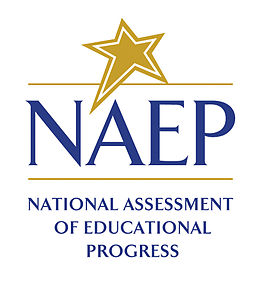National Assessment of Educational Progress – What does it really tell us?
The National Assessment of Education Progress (NAEP) started in 1964. The first voluntary assessments, however, did not take place until 1990. NACEP is the largest nation-wide testing and assessment of the knowledge base of students in the United States. The Congress has mandated this project. The administrator is the National Center for Education Statistics (NCES) a federal department within the Institute of Education Sciences (IES) of the United States Department of Education (USDE). It is known as the Nations’ Report Card (NCES, 2013).
What the NAEP covers:
Periodically, the NAEP tests and compiles data accordingly on various subjects. In 2013, the topics include:
• Mathematics
• Reading
• Science
• Writing
• The arts
• Civics
• Economics
• Geography
• American history
In 2014, another subject will come under the microscope of NAEP – Technology and Engineering Literacy (TEL).
The NAEP also gathers other pertinent information related to the progress and/or achievements of students. They gather it from a more extended body: students, teachers, and schools. This is to help place the information within the appropriate context.

The NAEP: Its Methods and Intent
The NAEP is a sample of the achievement on specific subject matter for certain populations of students and specific groups within these populations. As such, it cannot provide specific data on specific schools or states. However, state NAEP can provide a general picture and comparison based on the scores of the larger urban sectors in the samples.
The method also gathers data from two groups for different reasons. It utilizes information from the test given to grades 4, 8, and 12 for what is called the main assessment. It also gathers data from students ages 9, 13, or 17 years to use to discover and assess long-term trends.
The NAEP obtains the results using identical test methods and materials. It is uniform across the board for all states. As a result, it is perceived as a common comparison tool on how students across the nation are performing in the specific subjects. By adhering to the sameness of method and content, the purpose of NAEP provides a progress report for comparison over the years.
Who uses it and why
The keyword for usage is progress. Whether he or she is a member of the government, a parent, a teacher or a researcher, all turn to the data derived from NAEP to confirm, compare, build upon or even argue about how children are performing in the United States educational system. It is a beacon or a lightning rod for measuring how the United States is doing against the world or in the different states.
Contentious issues
When it comes to discussion and criticism, the focus is on two aspects of the tests: interpretation and the definition of proficiency (Klein, 2012; Harvey, 2011). Moreover, media hype either increases or decreases the differences found in the results by for example, making miniscule differences appear to be significant statistically.
Another criticism focuses around the differing levels of proficiency. Some critics claim the states are too quick to accept the highest levels provided in NAEP results as the norm. Educators and specialists argue the benchmark is “flawed” and state tests discover the students are more proficient in such tests than the national NAEP declares. In fact, as one author points out, the gap between the two findings can be as great as 40% (CPE, 2008). For some, such as Diane Ravitch (2013), the flaw lies in the inability for many to separate the levels: three levels: “Advanced” the highest ; “Proficient” and “Basic.”
Conclusion
NAEP has served as a measure of the progress in the American education system for over almost 50 years. To date, it is the most successful and accepted means of determining the rank and progress of American students within the country and in comparison to other nations. Unless someone creates and successfully promotes an alternative method, it will remain, with some fine tuning, around for another half-a-century.
Sources:
CPE 2008. “The Proficiency Debate.”
Harvey, J. 2011. “NAEP: A Flawed Benchmark Producing the Same Old Story.”
Klein, J. 2012. “The New Complacency.”
NCES. 2013 “NAEP.”
Ravitch, Diane 2013). “Will the New York Testing Fiasco Fuel the Testing Movement?”
